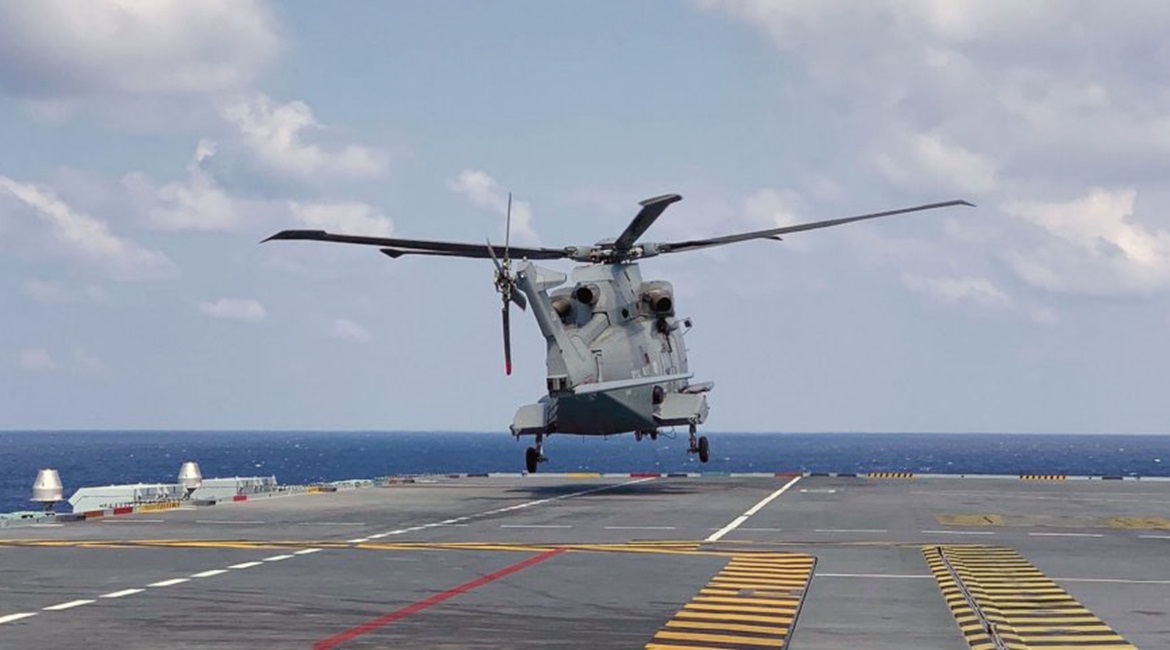
The UK Royal Navy (RN) aircraft carrier HMS Queen Elizabeth has completed a second phase of rotary-wing development as part of the ongoing ‘WESTLANT 19’ carrier strike group deployment.

Merlin HM2 ZH826 from 820 Naval Air Squadron conducts a ‘backwards’ landing as part of rotary-wind development trials. (Royal Navy/Crown Copyright)
Undertaken in waters off Newport and Mayport on the US eastern seaboard, the trial, conducted by a joint military-QinetiQ team from the Aircraft Test and Evaluation Centre (ATEC) at Boscombe Down, saw 550 deck landings and 471 test points executed by two Merlin helicopters – one HM2 and one HC4 – across an eight-day period between 21 September and 2 October.
Rotary Wing Development Testing (DT RW) used frontline aircraft drawn from 820 Naval Air Squadron (ZH826) and 845 Naval Air Squadron (ZJ121). Both were fitted with a modular QinetiQ instrumentation system that enabled the test crews to fly the aircraft while the squadron engineers conducted any necessary maintenance. This greatly reduced the size of the ATEC test team required.
Merlin was tested to the highest weight ever achieved in ship trials (16,200 kg). Trials included aft facing operations, running landings and take-offs, on-deck taxiing, and night operations.
A total of 106 test points were flown in a single 10-hour sortie with rolling crew changes. According to ATEC, this was the most ever flown by a single aircraft conducting ship/helicopter operating trials.
Prior to the start of ‘WESTLANT 19’, Captain James Blackmore, Carrier Air Wing and Strike Warfare Commander, told Jane’s that the DT RW would explore clearance of additional rotary-wing spots on Queen Elizabeth’s
Looking to read the full article?
Gain unlimited access to Janes news and more...






